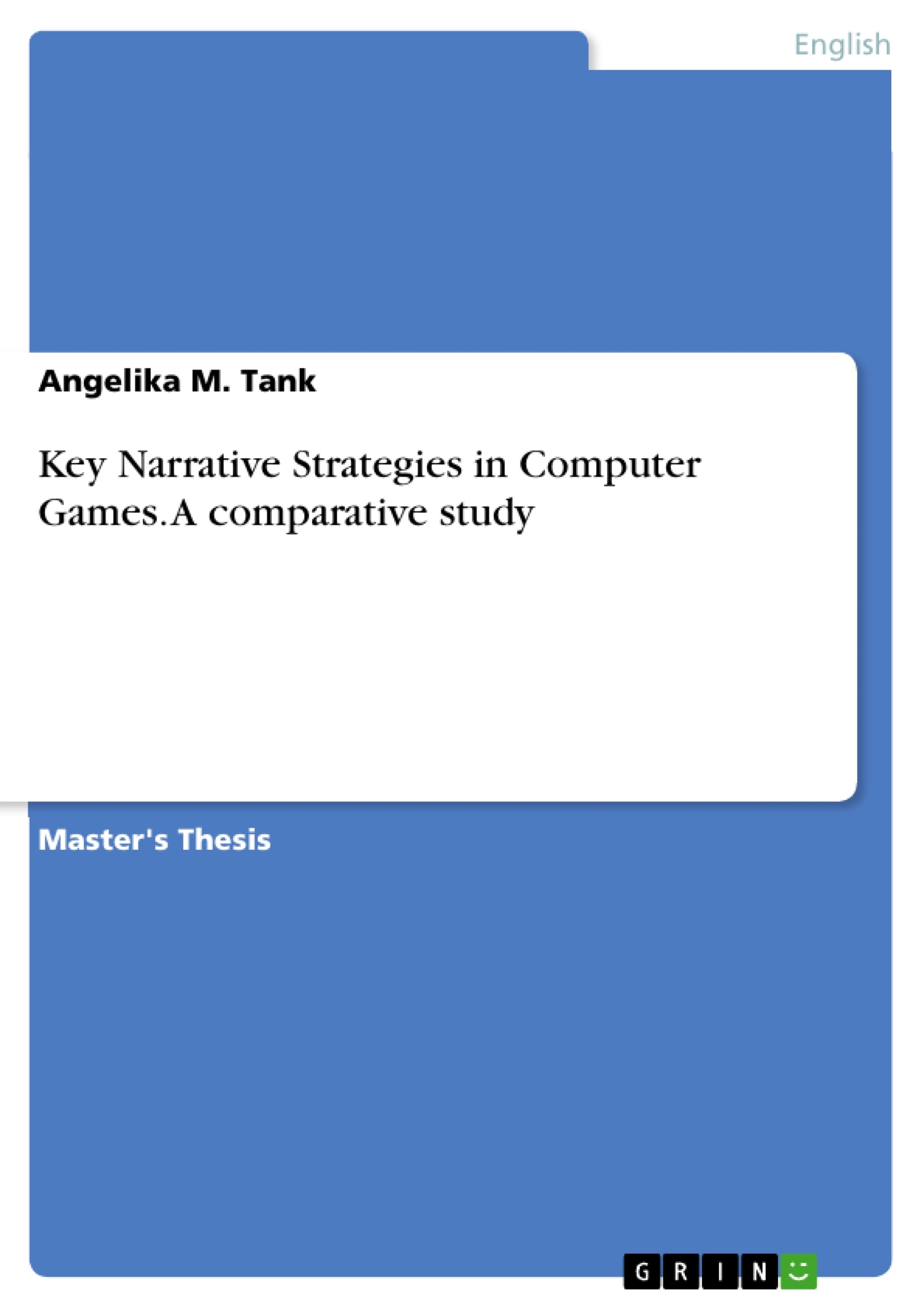A popular activity for many people are computer games, which can attract with compelling lore and stories. Taking Brian Richardson’s cause and effect as minimal standard for a narrative, this analysis aims to show narrative in computer games and motivate why they should be included in literary studies. In order to provide specific examples for narrative, the focus will be on key narrative strategies: characterization, setting (space), story and plot. Genette’s theory about order, voice, and mood functions as the base and is deepened, as well as broadened by further definitions and interpretations. The computer games chosen for this analysis are all based on literary works, in order to not only compare the games, but also have a reference to the original. Hence, establishing the place of games in the narrative field.
Who has not sometimes thought that a literary character is doing something wrong, or should consider other possibilities? Generally in a book, the narrative, including the decisions a character makes, cannot be altered and have to be taken ‘as is’. In story-driven video games, the player can decide which decision they want to make, with some limitations.
‘Story-driven’ computer games fulfill at least the minimal standard of a narrative, which is also in the foreground of the game. This minimal standard is based on Brian Richardson’s differentiation between a narrative and non-narrative cinema: cause and effect. However, the term ‘narrative’ can be understood in different ways and is not clear-cut. In order to provide specific examples for narrative in computer games and why they should be included in literary studies, this analysis is going to focus on key narrative strategies. This encompasses, an analysis of characterization, setting (space), story and plot. In order to also directly compare computer games and literary texts, specific games that are based on novels have been chosen for analysis. These games are Agatha Christie’s The ABC Murder (ABC), Ryan North’s To Be or Not To Be (To Be), and Orwell: Keeping an Eye on You (Orwell). The equivalent novels are Agatha Christie’s The ABC Murder (ABC Murder), Shakespeare’s Hamlet, and George Orwell’s 1984.
Inhaltsverzeichnis (Table of Contents)
- Abstract
- Introduction
- A Brief Overview of Classical Narratology
- Key Narrative Strategies
- Key narrative strategies by Genette
- Story
- Plot
- Character
- Narrative Space and Setting
- Difference Between Literary Texts and Story-driven Games
- Agatha Christie: The ABC MURDERS
- Story and Plot in ABC
- Narrative Space and Setting in ABC
- Characters in ABC
- Orwell: Keeping an Eye on You
- Story and Plot in Orwell
- Narrative Space and Setting in Orwell
- Characters in Orwell
- To Be or Not To Be
- Story of To Be
- Plot of To Be
- Narrative Space and Setting of To Be
- Characters in To Be
- Conclusion
Zielsetzung und Themenschwerpunkte (Objectives and Key Themes)
This analysis aims to demonstrate the presence of narrative in computer games and advocate for their inclusion in literary studies. It focuses on key narrative strategies like characterization, setting, story, and plot to provide specific examples. The analysis compares computer games to their literary sources, highlighting the role of games within the broader narrative field.
- Narrative strategies in computer games
- The relationship between computer games and literary works
- The significance of computer games in literary studies
- Exploring the concept of narrative and its application to computer games
- Analyzing narrative techniques using theories from classical narratology
Zusammenfassung der Kapitel (Chapter Summaries)
The analysis begins with a brief overview of classical narratology, emphasizing the work of Gérard Genette. It explores different theories regarding narratives and their complexities. The text delves into Genette's theory of narrative strategies, providing a detailed explanation of key concepts like order, voice, and mood. Further, it incorporates additional theories from Marie-Laure Ryan, Aristotle, Sabine Buchholz, Manfred Jahn, and Ruth Ronen to expand and refine Genette's model. The analysis then differentiates between literary texts and computer games, exploring the potential of games to be considered narrative based on Brian Richardson's "cause and effect" definition.
The text proceeds to examine the game "Agatha Christie's The ABC Murder," analyzing its story, plot, narrative space, and setting using the aforementioned theories. The chapter further delves into the game's characters, providing a thorough analysis of their roles and significance. The analysis then shifts to "Orwell: Keeping an Eye on You," exploring its story, plot, narrative space, setting, and characters. The focus is on how the game utilizes narrative strategies and fulfills the minimal requirements for a narrative. The text continues with a similar analysis of the game "To Be or Not To Be," focusing on its story, plot, narrative space, setting, and characters. The chapter emphasizes the game's connection to Shakespeare's "Hamlet" and its use of detective genre conventions. The conclusion of the analysis delves into the broader implications of the findings, considering the broader role of computer games within the field of literary studies.
Schlüsselwörter (Keywords)
The primary focus of the analysis is on narrative strategies in computer games, particularly characterization, setting, story, and plot. The analysis is grounded in classical narratology, drawing heavily on the theories of Gérard Genette, Marie-Laure Ryan, Aristotle, Sabine Buchholz, Manfred Jahn, and Ruth Ronen. It also delves into specific examples like "Agatha Christie's The ABC Murder," "Orwell: Keeping an Eye on You," and "To Be or Not To Be," using these games to explore the broader relationship between computer games and literary works.
- Citation du texte
- Angelika M. Tank (Auteur), 2018, Key Narrative Strategies in Computer Games. A comparative study, Munich, GRIN Verlag, https://www.grin.com/document/463904



